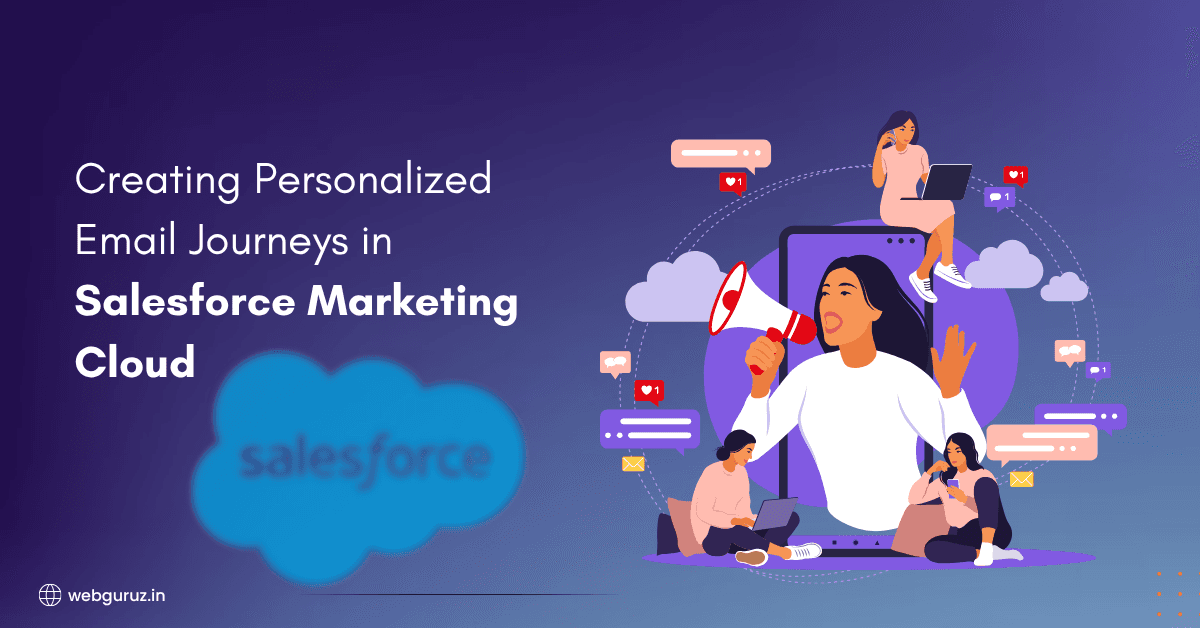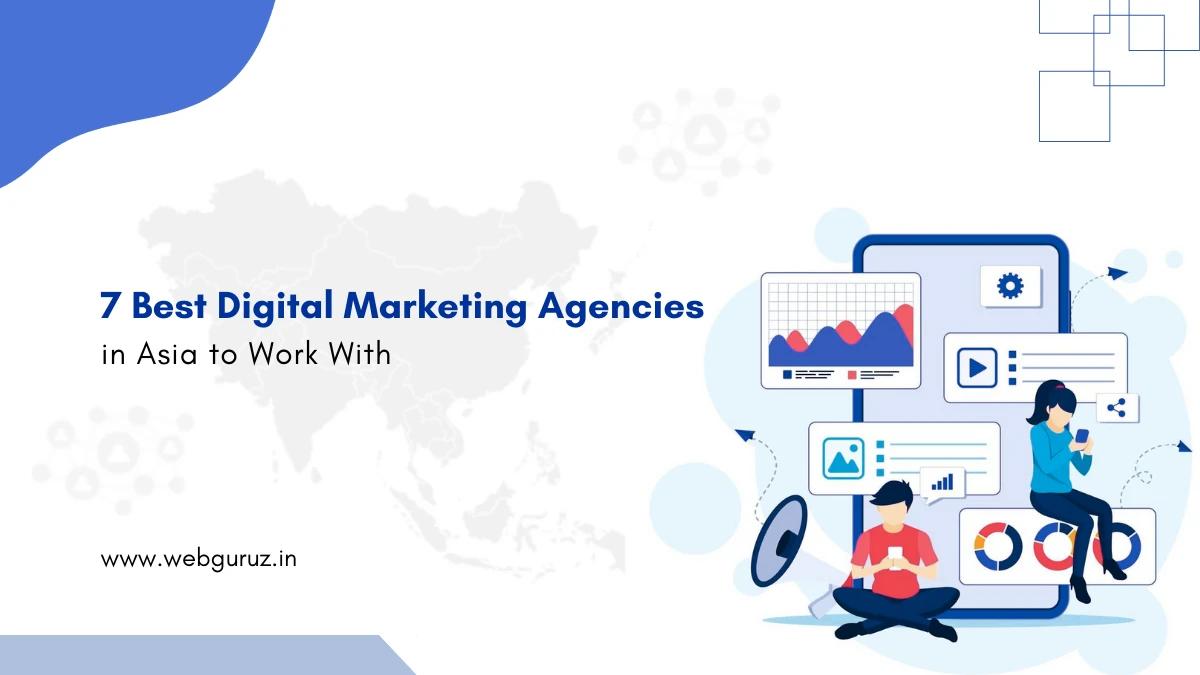Mohit Bhatt
2025-08-22
7 min read
7 Best Digital Marketing Agencies in Asia to Work With
Finding the right digital marketing agency for your business can feel like searching for a needle in a haystack.
Read More
Have you ever received an email that felt like it was written just for you? Maybe it recommended a product you were actually interested in, or reminded you about something at exactly the right time. That’s not magic — that’s the power of personalized email journeys, and it’s something every business can achieve with the right email marketing services.
In today’s crowded digital world, sending the same generic email to everyone on your list just doesn’t cut it anymore. People expect messages that speak directly to their needs, interests, and where they are in their relationship with your brand. This is where Salesforce Marketing Cloud comes in, offering powerful tools to create email experiences that feel personal and relevant to each recipient.

Think of an email journey like a conversation you have with a friend over time. You don’t start by asking them to buy something from you- instead, you build a relationship, share helpful information, and gradually earn their trust. Email journeys work the same way, guiding your subscribers through a series of carefully planned messages that move them closer to becoming customers.
The difference between traditional email blasts and personalized journeys is huge. While personalized emails achieve an impressive open rate of 29%, they have an outstanding click-through rate of 41% (Source). That’s because people are more likely to engage with content that feels relevant to their specific situation.
When you’re working with professional email marketing services or an email marketing agency for small businesses, creating these journeys becomes much more manageable. These experts understand how to map out customer paths and create touchpoints that actually matter to your audience.

Salesforce Marketing Cloud is like having a Swiss Army knife for email marketing. It’s packed with features that help you understand your customers better and communicate with them more effectively. The platform combines customer data, automation tools, and analytics in one place, making it easier to create those personalized experiences people love.
One of the biggest advantages of using Salesforce Marketing Cloud is how it connects with other Salesforce products. If your sales team is already using Salesforce CRM, your marketing team can see exactly what interactions each customer has had with your company. This complete picture helps create much more relevant and timely email messages.
Many businesses find that working with Salesforce Professional Services or a Salesforce Consulting Partner makes the initial setup much smoother. These experts can help you avoid common mistakes and get your email journeys up and running faster than trying to figure everything out on your own.
Before you can create personalized email journeys, you need to really understand who your customers are. This means collecting and organizing data about their preferences, behaviors, and interactions with your brand. Salesforce Marketing Cloud makes this process much easier by pulling information from multiple sources into one central location.
The key is to start with the basics and gradually build up more detailed customer profiles. Begin by tracking simple things like email opens, clicks, and website visits. Over time, you can add more sophisticated data like purchase history, product preferences, and even how customers interact with your mobile app.
This is where marketing automation solutions for growth really shine. Instead of manually tracking all this information, the system does it automatically in the background. You can focus on creating great content while the platform handles the technical details of data collection and organization.

Let’s walk through creating a simple but effective email journey. Imagine you run an online fitness equipment store, and someone just signed up for your newsletter. Instead of immediately trying to sell them something, you want to build a relationship first.
Your journey might start with a welcome email that introduces your brand and maybe offers some free workout tips. A few days later, you could send an email asking about their fitness goals—are they interested in cardio, strength training, or yoga? Based on their response, you can then send them content that matches their interests.
If they’ve been opening your emails and clicking on links about strength training equipment, your next message might include some beginner-friendly strength training tips along with a soft introduction to some of your most popular weight sets. The key is to provide value first and make any sales pitches feel natural and helpful rather than pushy.
Once you’ve mastered basic email journeys, you can start getting more sophisticated with your personalization. This is where the best marketing automation companies really stand out. They know how to use advanced features to create experiences that feel almost magical to recipients.
Dynamic content is one of the most powerful tools available. This means different parts of your email can change based on who’s reading it. For example, if you’re a clothing retailer, customers in New York might see winter coats in your newsletter while customers in Florida see summer dresses—all from the same email template.
Another advanced technique is behavioral triggering. This means sending emails based on specific actions customers take. If someone abandons their shopping cart, they might get a helpful reminder email. If they haven’t opened any emails in a while, they might get a special “we miss you” offer to re‑engage them.
Getting the timing right is crucial for email journey success. Send too many emails and people will unsubscribe. Send too few and they might forget about your brand entirely. The sweet spot varies by industry and audience, but most successful email programs send between 2‑4 emails per week to their most engaged subscribers.
The timing of individual emails within a journey is also important. A welcome email should go out immediately after someone signs up, while a follow‑up asking for feedback might wait a week after a purchase. Salesforce Marketing Cloud makes it easy to set up these timing rules automatically.
Research shows that Tuesday through Thursday tend to be the best days for email engagement, with Tuesday at 10 AM being particularly effective. However, your audience might be different, so it’s worth testing various send times to see what works best for your specific customers.
The beautiful thing about email marketing in platforms like Salesforce Marketing Cloud is that you can see exactly how well your journeys are performing. You can track not just basic metrics like open rates and click rates, but also more sophisticated measurements like how many people complete entire journeys and how much revenue each journey generates.
Some key metrics to watch include delivery rates (are your emails reaching inboxes?), engagement rates (are people opening and clicking?), and conversion rates (are people taking the actions you want?). If you notice a particular email in your journey has a high unsubscribe rate, that’s a signal that you might need to adjust the content or timing.
A/B testing is your best friend when it comes to improving email journeys. This means sending slightly different versions of emails to different groups of people to see which performs better. You might test different subject lines, send times, or even completely different content approaches.

One of the biggest challenges businesses face when creating email journeys is having too much data and not knowing what to do with it. This is where working with experienced Salesforce Professional Services or an email marketing agency for small businesses can be incredibly valuable. They can help you identify which data points actually matter for your business goals.
Another common issue is creating journeys that are too complex. It’s tempting to try to account for every possible customer scenario, but this often leads to journeys that are difficult to manage and don’t work well. Start simple and gradually add complexity as you learn what works for your audience.
Technical integration can also be challenging, especially if you’re using multiple software systems. This is another area where Salesforce Consulting Partners prove their worth— they can help ensure all your systems work together smoothly.
While it’s possible to set up email journeys on your own, many businesses find that working with professionals accelerates their success significantly. Marketing automation solutions for growth are most effective when they’re implemented by people who understand both the technology and marketing strategy.
Professional services can help with everything from initial platform setup to ongoing optimization. They bring experience from working with many different businesses and can help you avoid common pitfalls. Plus, they stay up-to-date with the latest features and best practices, so you don’t have to.
For smaller businesses, an email marketing agency for small businesses might be the perfect solution. These agencies understand the unique challenges that smaller companies face, like limited budgets and small marketing teams. They can provide enterprise-level expertise without the enterprise-level price tag.

Email marketing continues to evolve, with artificial intelligence and machine learning playing increasingly important roles. These technologies can help predict what content each customer is most likely to engage with and automatically optimize email send times for each individual recipient.
Interactive email content is also becoming more popular. Instead of just reading an email, recipients might be able to take surveys, browse product catalogs, or even make purchases directly within the email itself. Salesforce Marketing Cloud is continuously adding new features to support these advanced capabilities.
Privacy regulations like GDPR and CCPA are also shaping the future of email marketing. Successful email programs will be those that not only comply with these regulations but also use them as an opportunity to build more trust with customers by being transparent about data collection and use.
The ultimate goal of personalized email journeys isn’t just to make sales — it’s to build lasting relationships with customers. When you consistently provide value through your email communications, customers begin to see your brand as a trusted advisor rather than just another company trying to sell them something.
This relationship‑building approach pays dividends over time. Customers who feel connected to your brand are more likely to make repeat purchases, refer friends, and forgive occasional mistakes. They’re also less likely to be swayed by competitors’ offers because they value the relationship they have with your company.
The best marketing automation companies understand this principle and help their clients create email programs that prioritize long‑term relationship building over short‑term sales gains. This approach typically results in higher customer lifetime value and more sustainable business growth.
Creating personalized email journeys might seem overwhelming at first, but remember that every expert started as a beginner. The key is to start with simple journeys and gradually add complexity as you learn what works for your audience.
Begin by mapping out your customer’s typical journey from awareness to purchase. What questions do they have at each stage? What information would be helpful? What actions do you want them to take? Use these insights to create a basic email sequence that guides them through this process.
Don’t worry about making everything perfect from the start. The beauty of digital marketing is that you can always test, learn, and improve. Focus on providing genuine value to your subscribers, and the sales results will follow naturally.
Remember that successful email marketing is ultimately about serving your customers better. When you use personalization to deliver more relevant, helpful content, everyone wins—your customers get a better experience, and your business gets better results.

Mohit Bhatt
2025-08-22
7 min read
Finding the right digital marketing agency for your business can feel like searching for a needle in a haystack.
Read More
Mohit Bhatt
2025-08-20
7 min read
Choosing the right HubSpot Hubs for your business can feel overwhelming, especially when you’re looking at multiple options that seem to overlap in functionality.
Read More
Mohit Bhatt
2025-08-11
7 min read
Google’s AI Overview has changed how people search and find information online.
Read More